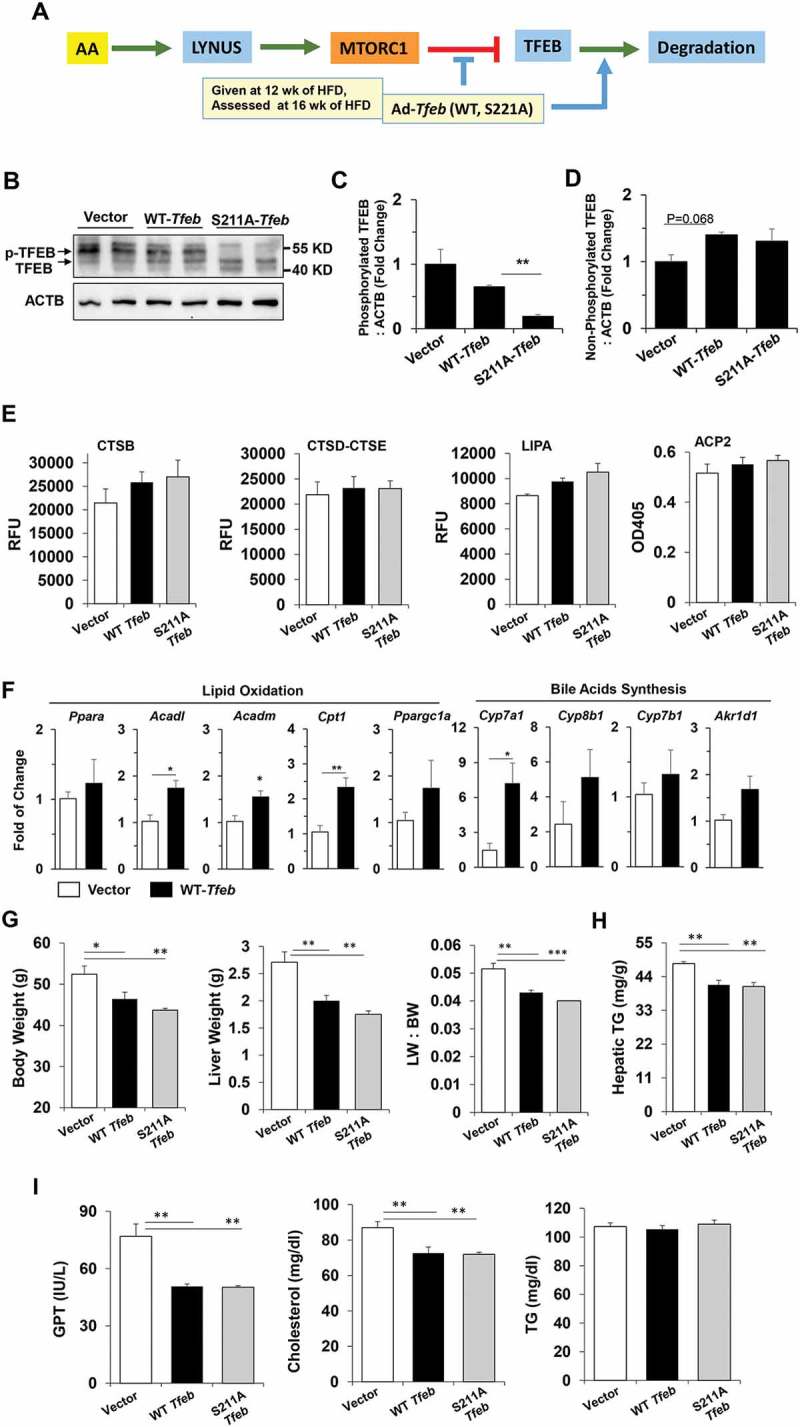Figure 6.

Overexpression of TFEB disrupted the oscillation and improved hepatic status in HFD-fed mice. (a) Scheme of experimentation. Mice fed with HFD for 12 weeks were given adenovirus expressing wild-type TFEB or the TFEBS211A mutant, or adenoviral vector, followed by 4 more weeks of HFD feeding before being sacrificed. (b-d) Expression of non-phosphorylated TFEB and phosphorylated TFEB (p-TFEB) in the liver was examined by immunoblotting assay (b). The relative levels of phosphorylated TFEB (c) and non-phosphorylated TFEB (d) were quantified, which were normalized to ACTB. (e) Hepatic lysosomal enzyme activities were determined in each group of the mice. (f) Hepatic expression of genes involved in lipid metabolism was assessed by qRT-PCR. (g-i) The following parameters were determined: body weight, liver weight, and liver:body weight ratio (g), hepatic TG (h), and serum levels (i) of GPT/ALT, cholesterol and TG. *, p < 0.05; **, p < 0.01; n = 3–6 per group. Acadl, acyl-Coenzyme A dehydrogenase, long-chain; Acadm, acyl-Coenzyme A dehydrogenase, medium chain; Akr1d1, aldo-keto reductase family 1, member D1; Cpt1, carnitine palmitoyltransferase 1a, liver; Cyp7a1, cytochrome P450, family 7, subfamily a, polypeptide 1; Cyp7b1: cytochrome P450, family 7, subfamily b, polypeptide 1; Cyp8b1, cytochrome P450, family 8, subfamily b, polypeptide 1; Ppargc1a/Pgc1-α, peroxisome proliferative activated receptor, gamma, coactivator 1 alpha; Ppara/Ppar-α, peroxisome proliferator activated receptor alpha.
